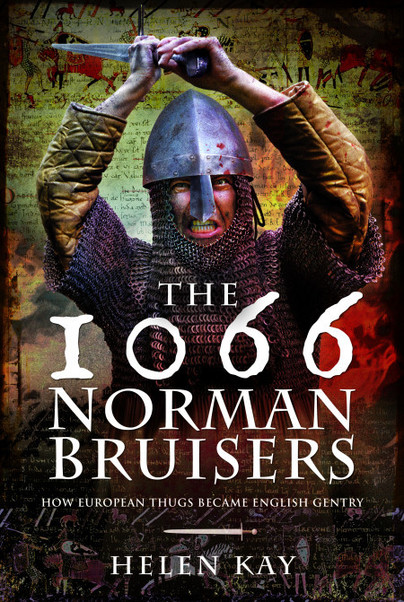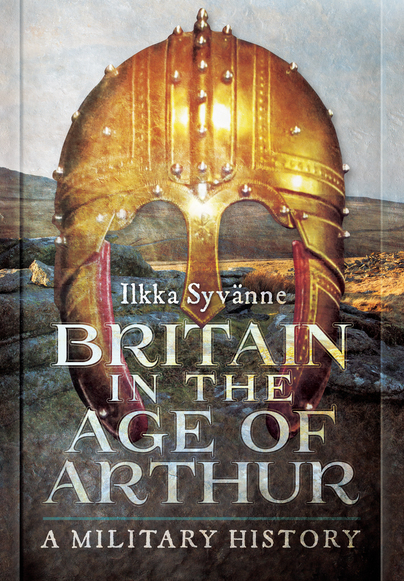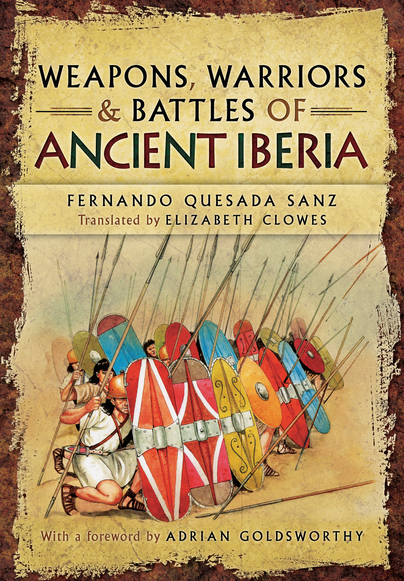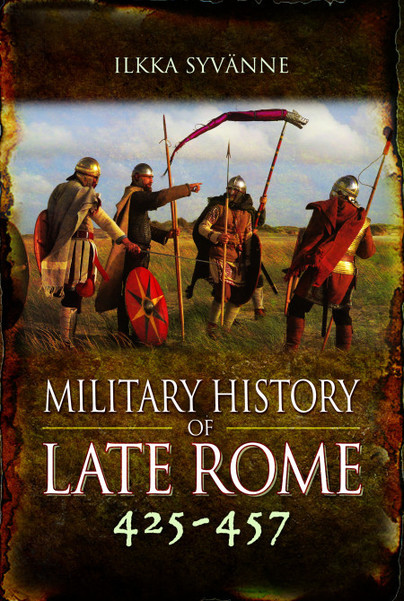Military History Books to look out for
The 1066 Norman Bruisers
The 1066 Norman Bruisers conjures up the vanished world of England in the late Middle Ages and casts light on one of the strangest quirks in the nation’s history: how a bunch of European thugs became the quintessentially English gentry.
In 1066 go-getting young immigrant Osbern Fitz-Tezzo crossed the Channel in William the Conqueror’s army. Little did he know that it would take five years to vanquish the English, years in which the Normans suffered almost as much as the people they had set out to subdue. For the English, the Norman Conquest was an unmitigated disaster, killing thousands by the sword or starvation. But for Osbern and his compatriots, it brought territory and treasure – and a generational evolution they could never have imagined.
Osbern’s descendants settled in Cheshire, which played a pivotal role in medieval England as the launch pad for Edward I’s Welsh wars, the chief recruiting ground for royal armies and Richard II’s regional powerhouse. Successive members of the Boydell family fought for monarchs and magnates, oversaw royal garrisons, travelled abroad as agents of the crown and helped to administer the laws of the land. When they weren’t strutting across the stage of northwestern England, mingling with great men and participating in great events, they engaged in feuds, embarked on illicit love affairs and exerted their influence in the small corner of the country they had made their own. By 1378, when William Boydell died from wounds sustained in combat, the nation he defended was England and the enemy he opposed dwelled just forty miles from the place where Osbern had probably grown up.
https://www.pen-and-sword.co.uk/The-1066-Norman-Bruisers-Hardback/p/16853
Britain in the Age of Arthur
King Arthur is one of the most controversial topics of early British history. Are the legends based on a real historical figure or pure mythological invention? Ilkka Syvannes study breaks new ground, adopting a novel approach to the sources by starting with the assumption that Arthur existed and that Geoffrey of Monmouths account has preserved details of his career that are based on real events.
He then interprets these by using common sense and the perspective of a specialist in late Roman military history to form a probable picture of what really happened during the period (roughly AD 400-550). This approach allows the author to test the entire literary evidence for the existence of Arthur to see if the supposed events of his career match what is known of the events of the period, the conclusion being that in general they do.
Arthurs military career is set in the context of the wider military history of Britain and Europe in this period and along the way describes the nature of armies and warfare of the period.
https://www.pen-and-sword.co.uk/Britain-in-the-Age-of-Arthur-Hardback/p/12858
Weapons, Warriors and Battles of Ancient Iberia
In ancient times, the Iberian Peninsula (Spain and Portugal) was home to warriors of great renown. Spanish and Celtiberian warriors, both infantry and cavalry, provided the backbone of the Carthaginian armies that terrorized Italy under Hannibal and proved even more ferocious in defence of their homeland against later Roman occupation.
The Lusitanian resistance under Viriathus was among the toughest the Romans encountered anywhere. Professor Quesada Sanz details the arms, armour and equipment of the various warriors of the region in fantastic detail, drawing on his intimate knowledge of the latest archaeological and historical research. His clear and informative text is supported throughout by a wealth of photographs, diagrams and exquisite colour artwork by Carlos Fernandez del Castillo.
This beautiful book is a rare combination of detailed, comprehensive information and sumptuous visual appeal that will be cherished by anyone with an interest in the warriors and weapons of the ancient world. The Spanish edition won the Hislibris Award for the ‘Best Historical Book’ for 2010 and is here faithfully translated into English.
https://www.pen-and-sword.co.uk/Weapons-Warriors-and-Battles-of-Ancient-Iberia-Hardback/p/9786
Military History of Late Rome 425–457
The Military History of Late Rome 425-457 analyses in great detail how the Romans coped with the challenge posed by masses of Huns in a situation in which the Germanic tribes had gained a permanent foothold in the territories of West Rome. This analysis reassesses the strategy and tactics of the period .
The book shows how cooperation between the West Roman Master of Soldiers, Aetius, and East Roman Emperor Marcian saved Western civilization from the barbarian nightmare posed by the Huns of Attila. A fresh appraisal of the great clash at the Catalaunian Fields in 451 offers new insights into the mechanics of the fighting and shows that it was a true battle of nations which decided nothing less than the fate of human civilization.
Had Aetius and his allies lost the battle and had Marcian not cooperated with Aetius in 451 and 452, we would not have seen the rise of the West and the rise of the scientific thinking.
https://www.pen-and-sword.co.uk/Military-History-of-Late-Rome-425457-Hardback/p/16421
The Man Behind the Tudors
Thomas Howard, 2nd duke of Norfolk, lived a remarkable life spanning eighty years and the reigns of six kings. Amongst his descendants are his granddaughters, Anne Boleyn and Catherine Howard, and his great-granddaughter, Elizabeth I. The foundations of this dramatic and influential dynasty rest on Thomas’ shoulders, and it was his career that placed the Howard family in a prominent position in English society and at the Tudor royal court.
Thomas was born into a fairly ordinary gentry family, albeit distantly related to the Mowbray dukes of Norfolk. During the course of the fifteenth century, he and his father would rise through the political and social ranks as a result of their loyal service to Edward IV and Richard III. In a tragic turn of events, all their hard work was undone at the Battle of Bosworth and his father was killed fighting for King Richard.
Imprisoned for treason and stripped of his lands and titles, Thomas had to start from the beginning to gain the trust of a new king. He spent the next thirty-five years devoting his administrative, military and diplomatic skills to the Tudors whilst rebuilding his family fortunes and ensuring that his numerous children were well-placed to prosper.
https://www.pen-and-sword.co.uk/The-Man-Behind-the-Tudors-Hardback/p/16900
< BACK



